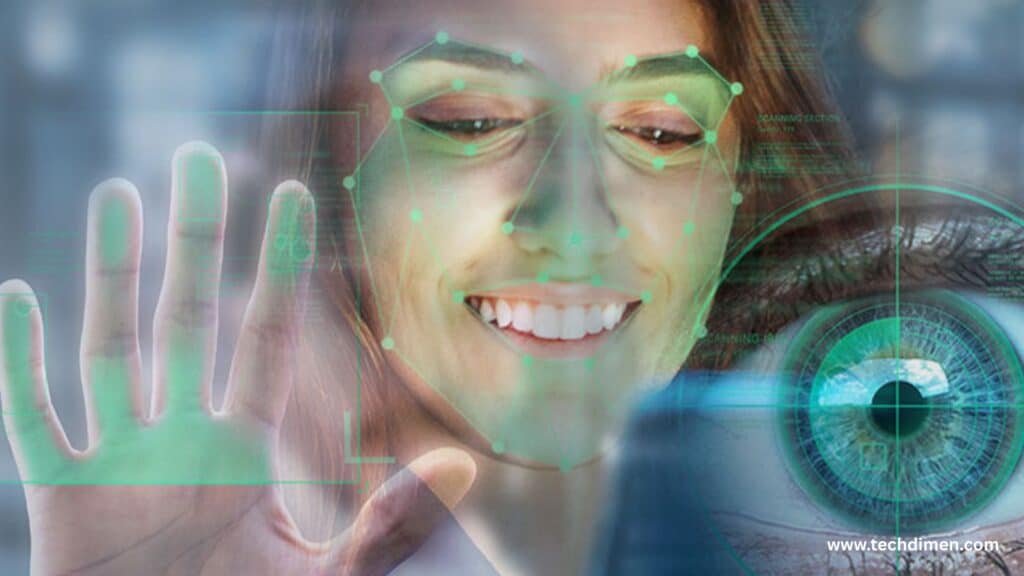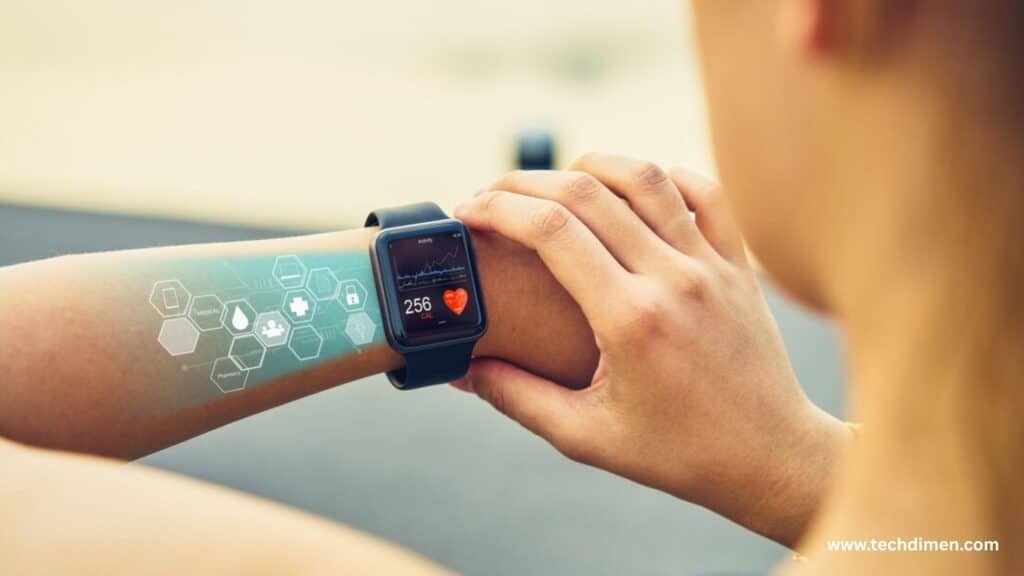Heartbeat technology is reshaping the way we think about identity verification and health tracking. Instead of relying on fingerprints or passwords, this cutting edge field uses the unique electrical signals produced by your heart to identify you and monitor your well being. Often called cardiac biometric authentication or heartbeat recognition systems, this technology taps into the natural patterns of your heart’s rhythm, which are as unique to you as your fingerprint.
Thanks to breakthroughs in biometric heartbeat sensors and smart devices, heartbeat technology now enables real-time health insights and secure, contactless authentication. Whether it’s through wearable heart monitors or contactless biometric technology, your heartbeat can unlock a future that blends convenience with enhanced security and health awareness.
What Is Heartbeat Technology and How Does It Work?

At its core, heartbeat technology captures the electrical signals generated by the heart with every beat. These signals produce a pattern called an electrocardiogram (ECG), which shows the timing and strength of each heartbeat. This waveform isn’t random; it consists of distinctive features the P wave, QRS complex, and T wave that collectively form a unique “cardiac signature” for every individual.
Unlike traditional biometrics like facial recognition or fingerprints, your heart’s electrical activity reflects deep physiological characteristics. Factors like heart size, muscle fiber orientation, and even how electrical impulses travel through your heart create a pattern that’s incredibly difficult to mimic or steal.
Modern heartbeat scanners and sensors embedded in devices such as smartwatches or fitness bands pick up these signals. Advanced signal processing and AI-driven health tech analyze the patterns to authenticate identity or track health changes. Some cutting-edge systems even use radar-based heartbeat detection, which can sense heartbeats without direct skin contact, opening doors to contactless identification and health monitoring.
Real-Life Uses of Heartbeat Recognition Systems
Heartbeat technology is already making waves across multiple fields, with practical applications that impact everyday life. In healthcare, continuous monitoring through wearable ECG devices allows early detection of cardiac irregularities such as arrhythmias or abnormal heart rate variability. These devices help doctors track patients remotely, supporting telehealth and reducing unnecessary hospital visits.
For instance, patients with conditions like atrial fibrillation benefit hugely from constant monitoring. Early warnings sent through heart rhythm technology can prompt timely medical intervention, potentially saving lives. In this way, heartbeat technology offers not just identification but crucial health insights that traditional devices can’t provide.
Beyond health, heartbeat-based access is revolutionizing security. Instead of relying on passwords or physical tokens, systems now use your unique cardiac signature for biometric access control. This kind of authentication is not only highly secure but also extremely convenient no need to remember passwords or carry cards.
Security-sensitive industries, including finance and defense, are adopting ECG-based biometric security systems to prevent unauthorized access. Because your heartbeat changes naturally and can’t be faked or cloned easily, it offers a level of protection far beyond conventional biometrics.
Why Heartbeat Recognition Beats Other Biometric Methods

Heartbeat authentication brings several advantages that make it stand out. First, it enables continuous, real-time verification. Unlike fingerprint or facial scans that only check once at login, cardiac biometric authentication can verify your identity constantly while you use a device or access a secure area. This dynamic security model dramatically reduces the chance of fraud or unauthorized use.
Secondly, the internal nature of heart signals makes heartbeat recognition incredibly difficult to spoof. Fingerprints and faces can be copied or manipulated; heart rhythms cannot. This internal biological uniqueness is why heartbeat recognition systems are considered one of the most secure forms of biometric authentication available.
Additionally, heartbeat monitoring is mostly non-invasive and user-friendly. Many modern devices use contactless biometric technology, meaning you don’t need to touch a sensor for your identity to be verified. This is particularly useful in healthcare settings, where hygiene is crucial.
Accuracy is another strength. Studies show that heartbeat-based systems can achieve extremely low false acceptance and rejection rates, often rivaling or surpassing those of traditional biometrics.
Challenges and Limitations in Heartbeat Technolog
Despite its many benefits, heartbeat technology faces hurdles that must be addressed to reach its full potential. One significant challenge involves accuracy during movement. When a user is exercising or moving rapidly, sensors may pick up noise that distorts the heartbeat signal, making recognition less reliable. Improving heart rate variability sensors to work effectively in real-world, active environments remains a key research area.
Environmental interference such as electromagnetic noise can also affect signal clarity. Developers are continually refining bioelectrical pattern analysis algorithms to filter out these distractions and ensure consistent performance.
Privacy is another major concern. Heartbeat data reveals not only identity but also sensitive health information. Protecting this data through robust encryption and ethical standards is critical because, unlike a password, you cannot change your heartbeat if the information is compromised.
There’s also a conversation to be had about consent. Since heartbeat biometric security can work passively and contactlessly, it’s essential that users maintain control over when and how their data is collected and used.
The Exciting Future of Heartbeat Technology

Looking ahead, heartbeat technology is poised to grow in both healthcare and security domains. AI and machine learning are powering new levels of accuracy and predictive health insights. Future smart heart devices will not only authenticate identity but also predict potential cardiac events before symptoms even appear.
The concept of smart cities could incorporate heartbeat authentication in everyday infrastructure. Imagine walking into a building or boarding a bus, and your identity is verified seamlessly via your heartbeat, without swiping cards or entering codes. This vision points to a world where security blends invisibly into everyday life.
In virtual reality, heartbeat data can enhance immersion by adapting digital experiences based on your emotional or physical state. For example, a VR game might become more intense or calm depending on your heart rate variability.
Military and defense sectors continue to explore heartbeat biometrics for secure access in sensitive environments. The technology’s combination of security and ease-of-use makes it ideal for high-stakes applications.
As sensor costs drop and technology advances, heartbeat biometric authentication will become more accessible for everyday consumers, leading to wider adoption in smartphones, wearables, and Internet of Things (IoT) devices.
Why You Should Care About Heartbeat Technology Now

Heartbeat technology is not just a futuristic concept it’s already influencing how health and security systems operate today. Understanding this technology equips you to take advantage of new devices that can protect your identity while providing valuable health data.
Whether you’re interested in the latest wearable biometric security gadgets or concerned about privacy in biometric systems, heartbeat technology offers an elegant solution that combines security, convenience, and health monitoring in one.
The promise of early disease detection, continuous identity verification, and contactless authentication means heartbeat tech could soon become a daily part of your life. Keeping an eye on this evolving field will help you stay ahead in a world where your heartbeat might just be the key to your digital and physical safety.
If you want, I can help with deep dives into specific applications or provide charts that compare different heartbeat sensors and devices. Just ask!
Heartbeat Technology vs Other Biometrics
| Feature | Heartbeat Tech | Fingerprint | Facial Recognition | Iris Scan |
|---|---|---|---|---|
| Uniqueness | Very High (ECG is unique) | High | Moderate | Very High |
| Contactless | Yes (via radar or ECG) | No | Yes | No |
| Spoof Resistance | Very Strong | Moderate | Weak | Strong |
| Continuous ID | Yes | No | No | No |
| Health Monitoring | Yes (real-time ECG/HRV) | No | No | No |
| Ease of Use | High (passive detection) | Medium | High | Low |
FAQs
What Exactly Is Heartbeat Technology and How Does It Work
Heartbeat technology captures the unique electrical signals generated by your heart with every beat. These signals create an electrocardiogram (ECG) pattern, which acts like a personal cardiac fingerprint. By analyzing this pattern, devices can identify individuals or monitor heart health in real time, providing continuous and personalized biometric data.
How Reliable Is Heartbeat Recognition Compared to Fingerprints or Facial Scans?
Heartbeat recognition offers high reliability because your heart’s electrical signals are complex and unique to you, making them difficult to replicate or fake. Unlike fingerprints or facial recognition, heartbeat-based authentication can continuously verify your identity while you use a device, increasing security without interrupting your experience.
Can Heartbeat Technology Be Used for Access Control and Device Security?
Yes, heartbeat technology is increasingly adopted for biometric access control. It enables secure login, identity verification, and access to restricted areas by detecting your unique cardiac signature. Many systems offer contactless recognition, which improves convenience and hygiene, especially in sensitive environments.
What Types of Devices Use Heartbeat Biometric Sensors?
Heartbeat sensors are now common in wearable technology such as smartwatches and fitness trackers that include ECG monitoring features. Additionally, radar-based heartbeat scanners can detect heart rhythms remotely, allowing contactless biometric authentication and health monitoring without needing physical sensors.
Is Heartbeat Data Secure and How Is Privacy Protected?
Heartbeat data contains sensitive personal and health information, so its security is critical. Most devices use strong encryption methods and adhere to strict privacy standards to safeguard this data. Users should ensure their devices and apps follow best practices for data protection to prevent unauthorized access.
How Is Heartbeat Technology Improving Healthcare Monitoring?
In healthcare, heartbeat technology enables continuous monitoring of cardiac health, helping detect arrhythmias, irregular heartbeats, and other heart conditions early. Remote monitoring capabilities allow doctors to track patients’ heart health outside of clinical settings, enhancing preventive care and personalized treatment plans.
Does Physical Movement Affect the Accuracy of Heartbeat Recognition?
Physical movement can disrupt the clarity of heartbeat signals, making recognition less accurate. However, advances in sensor design and signal processing algorithms are steadily improving the ability to capture reliable data even during exercise or daily activities, increasing the practicality of heartbeat technology.
Can Heartbeat Recognition Identify Someone Without Physical Contact?
Yes, radar-based heartbeat recognition systems can detect and analyze heart rhythms from a distance without requiring physical contact. This contactless technology is especially useful in environments where hygiene is a concern or when wearing a device is not feasible.
What Are the Main Challenges Facing Heartbeat Biometric Systems Today?
The biggest challenges include managing signal interference caused by motion, ensuring user privacy, filtering environmental noise, and making sensors affordable and easy to use. Ongoing research and development aim to overcome these issues to expand the adoption of heartbeat-based biometrics.
What Does the Future Hold for Heartbeat Technology?
The future looks promising with the integration of heartbeat technology into smart city infrastructure, virtual reality environments, and military applications. Artificial intelligence will enhance predictive health analytics and improve biometric security, especially as more devices connect through the Internet of Things (IoT).
Final Thoughts: Why Heartbeat Technology Matters
Heartbeat technology is set to change how we secure our identities and monitor our health. Using your heart’s unique signals, it offers a level of security that’s hard to match and health insights that can save lives.
This tech blends convenience with powerful protection no passwords or cards needed, just your heartbeat. While privacy and accuracy challenges remain, ongoing improvements promise a safer, smarter future.
In short, heartbeat technology isn’t just innovative it’s becoming essential. Keeping an eye on it now means staying ahead in a world where your heartbeat could soon be your key to safety and well being.

Jhon AJS is a tech enthusiast and author at Tech Dimen, where he explores the latest trends in technology and TV dimensions. With a passion for simplifying complex topics, Jhon aims to make tech accessible and engaging for readers of all levels.







